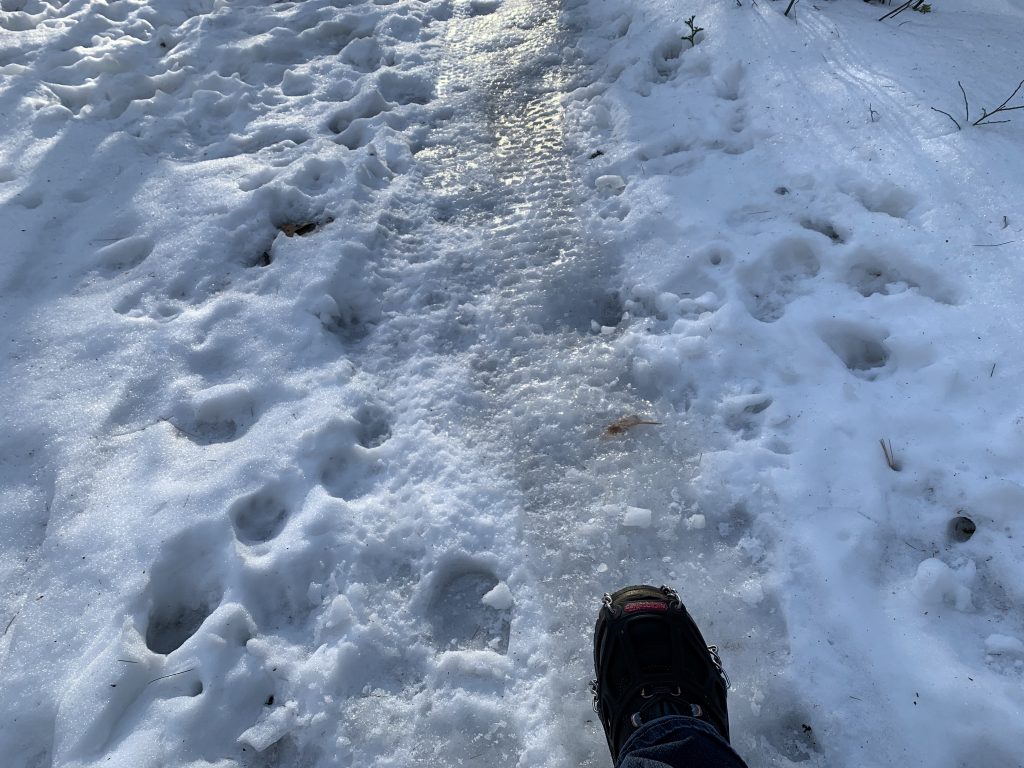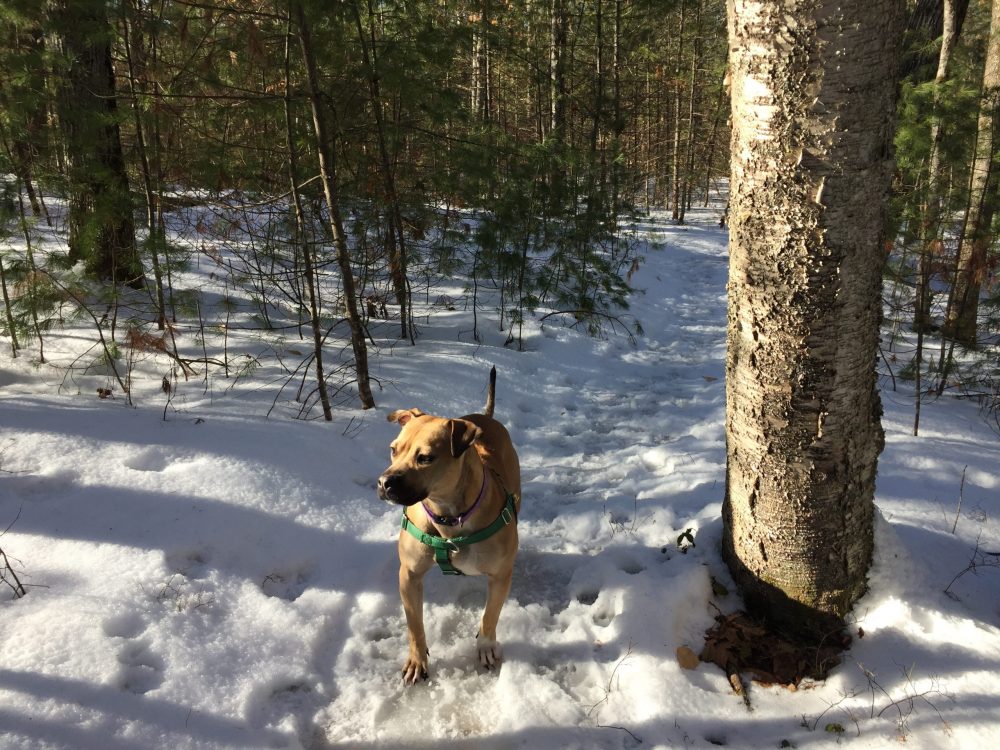 I know, I did it, too! All those inspiring winter photos in magazines look enticing! You think, “I am going to FLOAT on the snow in these snowshoes and reach my winter bliss!” Then you finally take them for a spin when a few flakes accumulate on the snow. Boy, are they AWKWARD. And if you have deep snow, you realize quickly that there’s no “floating” at all. It’s more like walking in sand and sinking partway in while wearing trash can lids on your feet. Oh my heavens, it’s sooo much work to walk in snowshoes. At no point do you think, “Wheee! I’m gliding through the forest and catching my breath!” Even downhill is work.
I know, I did it, too! All those inspiring winter photos in magazines look enticing! You think, “I am going to FLOAT on the snow in these snowshoes and reach my winter bliss!” Then you finally take them for a spin when a few flakes accumulate on the snow. Boy, are they AWKWARD. And if you have deep snow, you realize quickly that there’s no “floating” at all. It’s more like walking in sand and sinking partway in while wearing trash can lids on your feet. Oh my heavens, it’s sooo much work to walk in snowshoes. At no point do you think, “Wheee! I’m gliding through the forest and catching my breath!” Even downhill is work.
There IS a time and place for snowshoes. If you’re walking in deep snow, while you won’t float, you will stay in the top few inches of snow and won’t posthole and sink up to your thighs. Snowshoes are also great for breaking trail after a new storm to pack it down evenly. I toss mine on and romp around the yard and nearby woods to break trail for Reishi on our morning potty walks (because she’s totally spoiled). If you like to go off-trail to follow birds or animal tracks, then snowshoes are a good bet. And if you’re hiking in boots and you’re noticing that you’re leaving deep marks in the snow, good winter trail etiquette involves strapping on a pair of snowshoes so you don’t make the trails all lumpy bumpy for everyone else. If you’re hiking in the North Country, then you probably want snowshoes on with microspikes as backup in your pack in case you hit icy conditions.
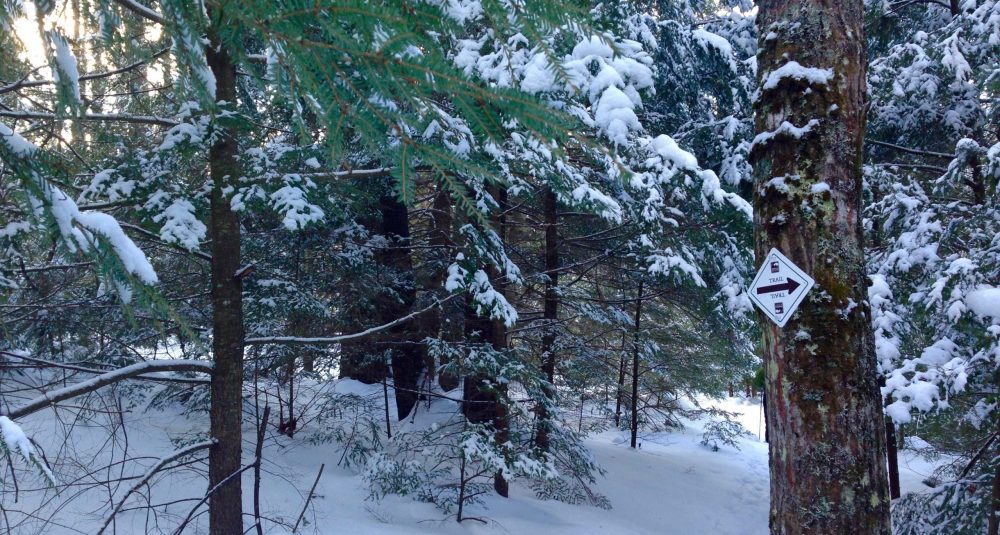 But, if the trails are not full of deep fluffy snow and are packed or icy – which is far more common on high-traffic trails here in Southern New Hampshire – then microspikes are the way to go. Basically, these are stretchy spikes that you pull over your boots to help you stick to the ice and packed snow without slipping. I’m a clumsy gal. They are a godsend. You’ll laugh at icy trails, and then run on them without fear. In fact, I enjoy hiking in winter with spikes more than hiking in summer because you’re amazingly sure-footed and (once the snow builds up) there are fewer rocks and roots to trip over. Many winter hikes are totally unsafe without the solid grip of spikes to keep you from sliding off the cliff, down the mountain, or into the ravine. I also use them when the yard gets iced up for snowblowing, feeding chickens, getting the mail, helping people out when they slide off the road into the trees in front of my house… you get the idea. You will never step foot outside in winter without them again!
But, if the trails are not full of deep fluffy snow and are packed or icy – which is far more common on high-traffic trails here in Southern New Hampshire – then microspikes are the way to go. Basically, these are stretchy spikes that you pull over your boots to help you stick to the ice and packed snow without slipping. I’m a clumsy gal. They are a godsend. You’ll laugh at icy trails, and then run on them without fear. In fact, I enjoy hiking in winter with spikes more than hiking in summer because you’re amazingly sure-footed and (once the snow builds up) there are fewer rocks and roots to trip over. Many winter hikes are totally unsafe without the solid grip of spikes to keep you from sliding off the cliff, down the mountain, or into the ravine. I also use them when the yard gets iced up for snowblowing, feeding chickens, getting the mail, helping people out when they slide off the road into the trees in front of my house… you get the idea. You will never step foot outside in winter without them again!
Shannon and I also love xc skiing with backcountry skis (for those of you who are “local,” Ragged Mountain Equipment north of North Conway (go into the store for assistance)is the best stocked store for these) whenever conditions allow on local trails or nordic ski centers (Waterville Valley, Windblown near Peterborough, Jackson XC and the dog-friendly Bear Notch, dog-friendly Green Woodlands near Rumney…). Now, there’s some whee-factor! I’m too much of a scaredy pants for downhill skiing, plus xc is a lot less expensive and a better workout. It’s still a commitment and an outing, though.
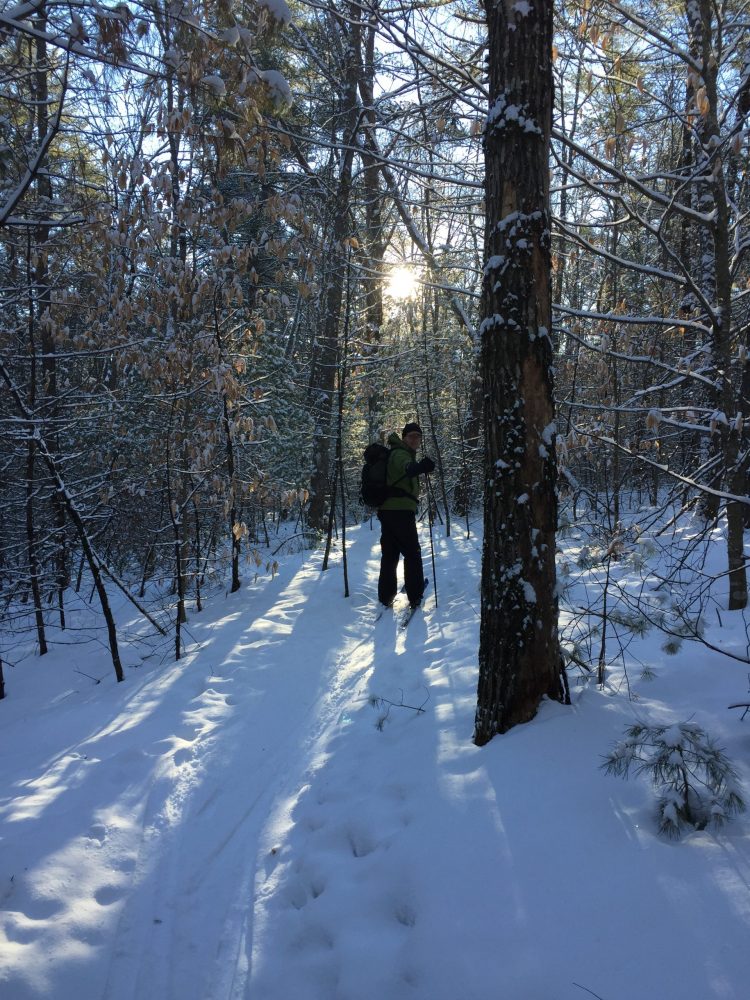 But, really, for the day to day in most of our typical winter conditions here in Southern NH, microspikes are where it’s at. I have no idea why everyone doesn’t have a pair. I had no idea they existed until I met my outdoorsy husband… but then, I also didn’t hike until I met him. When I lend my extra pairs to friends, they are amazed. The ones I like best are by Kahtoola*, but you can find cheaper knock offs that work pretty well. Some of other styles (I don’t want to badmouth, but one of them rhymes with “axe”) are terrible. Don’t be tempted by their cheaper price tag, they’re a waste of money!
But, really, for the day to day in most of our typical winter conditions here in Southern NH, microspikes are where it’s at. I have no idea why everyone doesn’t have a pair. I had no idea they existed until I met my outdoorsy husband… but then, I also didn’t hike until I met him. When I lend my extra pairs to friends, they are amazed. The ones I like best are by Kahtoola*, but you can find cheaper knock offs that work pretty well. Some of other styles (I don’t want to badmouth, but one of them rhymes with “axe”) are terrible. Don’t be tempted by their cheaper price tag, they’re a waste of money!
Sometimes, it just takes a few simple tools – warm non-cotton layers, and a good pair of glove liners with mittens (with handwarmers between the layers for cold days and cold-handed people) – to make getting out in winter fun. Enjoy!
While you’re out there, you can practice winter tree ID and learn about evergreen medicinal plants. 😉
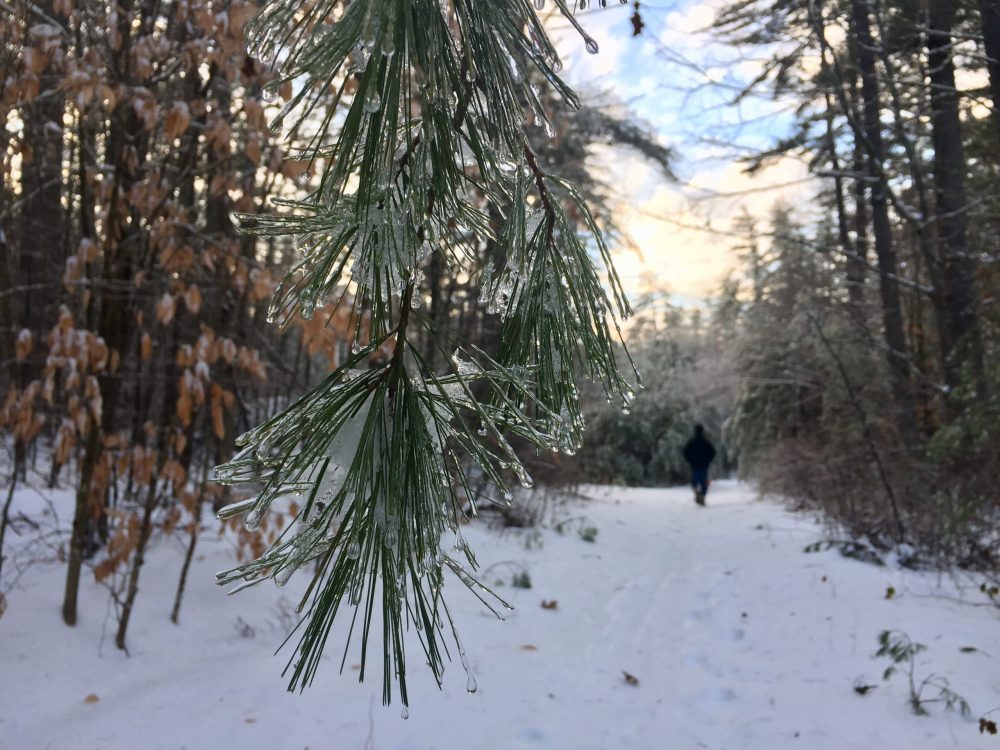
Clinical herbalist Maria Noël Groves sees clients and teaches classes at Wintergreen Botanicals Herbal Clinic & Education Center in Allenstown, New Hampshire.
The statements made on this blog have not been evaluated by the FDA and are not intended to diagnose, prescribe, recommend, or offer medical advice. Please see your health care practitioner for help regarding choices and to avoid herb-drug interactions.
* Full disclosure: This is an Amazon affiliate link, but this is the product I use and prefer most (which comes with a handy two-year warrantee). Cheaper knock-offs that look similar should also work well, but I’ve been disappointed with other styles.

